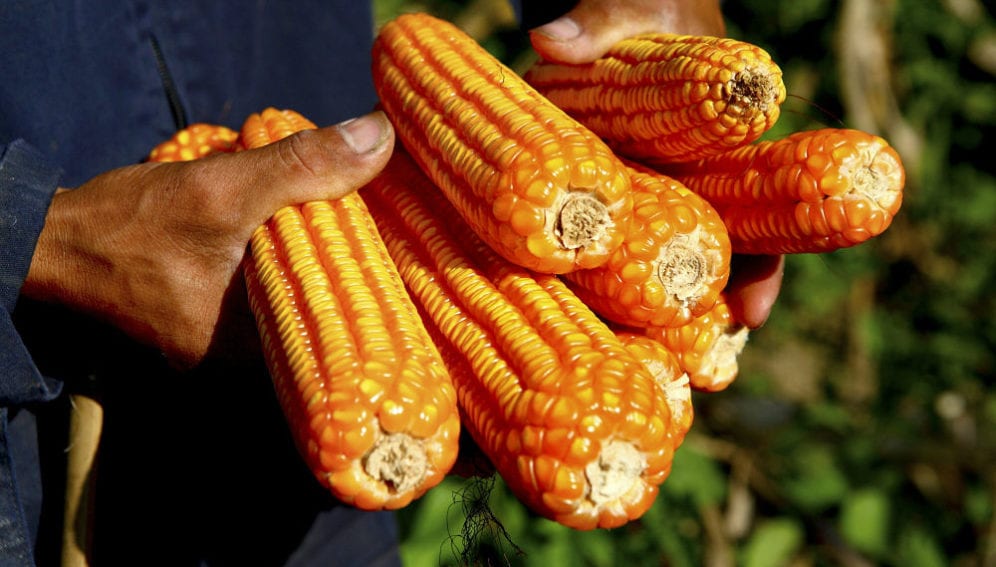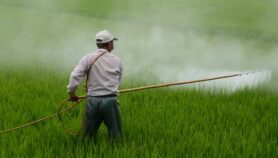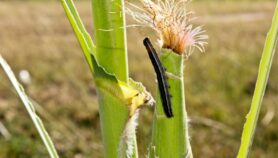By: Syriacus Buguzi
Send to a friend
The details you provide on this page will not be used to send unsolicited email, and will not be sold to a 3rd party. See privacy policy.
[DAR ES SALAAM] A biocontrol technology called AflasafeTZ could help control the deadly aflatoxin contamination in maize and groundnuts in Tanzania, scientists say.
After a two-year field trial conducted in several sites across Tanzania, AflasafeTZ reduced contamination of food crops with the poisonous fungus by over 85 per cent, according to the results of a trial presented at a meeting in Tanzania last month (15 November).
Aflatoxin, a poisonous chemical found in soil and produced by the naturally occurring Aspergillus flavus fungi, is a major threat to public health and food security in Africa and other parts of the world, according to the Food and Agriculture Organization (FAO).
“The technology is tailored for Tanzania, using fungi exclusively from the country.”
George Mahuku, IITA
High exposure to aflatoxin causes Aflatoxicosis, which is the poisoning resulting from ingesting aflatoxins that leads to acute illness and potentially death in human beings and other mammals such as mammals fish and birds.
AflasafeTZ is a biocontrol product developed using fungi of the same family as those that produce aflatoxins. They do not produce the poison, and as they multiply these fungi are able to outcompete Aspergillus flavus — and this helps keep food crops safe.
Using this method, researchers from the International Institute of Tropical Agriculture (IITA) in Nigeria and from Tanzania’s Ministry of Agriculture reduced aflatoxin contamination in maize and groundnuts to levels that are fit for human consumption.
George Mahuku, a plant pathologist at IITA who is leading the research efforts in Tanzania, told SciDev.Net that the trials were necessary to verify how the technology works in the real world.
“The technology is tailored for Tanzania, using fungi exclusively from the country,” said Muhuku.
During the trials, researchers applied AflasafeTZ in selected fields between January and March of 2016 and 2017, with the crops harvested between April and July for each year. Aflatoxin analysis was conducted immediately after harvest.
To apply the technology, farmers have to scatter the aflasafeTZ in their fields 50 days after planting their groundnut or three weeks before the flowering of maize plants.
The US Department of Agriculture first developed Aflasafe, with IITA and other partners, and is helping several countries in Africa such as the Gambia, Kenya and Nigeria to adopt it.
According to IITA, nine African countries including Burundi, Malawi, Mozambique, Rwanda, Senegal, Uganda and Zambia are developing country-specific strains of the fungi to help control aflatoxins in food crops.
Every year, Tanzania loses over US$264 million due to aflatoxin poisoning, according to a 2016 report by the Nelson Mandela African Institution of Science and Technology.
The report documented cases of 14 people who died in 2016 and 54 others who fell ill after eating contaminated cereals in the Dodoma region of the country.Sajjad Fazel, a clinical pharmacist and a public health advocate in Tanzania, told SciDev.Net that the trials are a great achievement, but more should be done to fight aflatoxins.
“This success is not enough. Aflatoxins can be found in the milk of cattle [through] feeding on contaminated fodder,” says Fazel. “We have to eliminate aflatoxins completely and in order to do that, community engagement is necessary.’’
This piece was produced by SciDev.Net’s Sub-Saharan Africa English desk.














